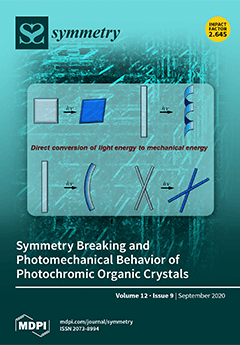The present study reports a reconstruction scheme for
gravity with the scale factor
describing the pre-bounce ekpyrotic contraction, where
is the big crunch
[...] Read more.
The present study reports a reconstruction scheme for
gravity with the scale factor
describing the pre-bounce ekpyrotic contraction, where
is the big crunch time. The reconstructed
is used to derive expressions for density and pressure contributions, and the equation of state parameter resulting from this reconstruction is found to behave like “quintom”. It has also been observed that the reconstructed
has satisfied a sufficient condition for a realistic model. In the subsequent phase, the reconstructed
is applied to the model of the chameleon scalar field, and the scalar field
and the potential
are tested for quasi-exponential expansion. It has been observed that although the reconstructed
satisfies one of the sufficient conditions for realistic model, the quasi-exponential expansion is not available due to this reconstruction. Finally, the consequences of pre-bounce ekpyrotic inflation in
gravity are compared to the background solution for
matter bounce.
Full article





